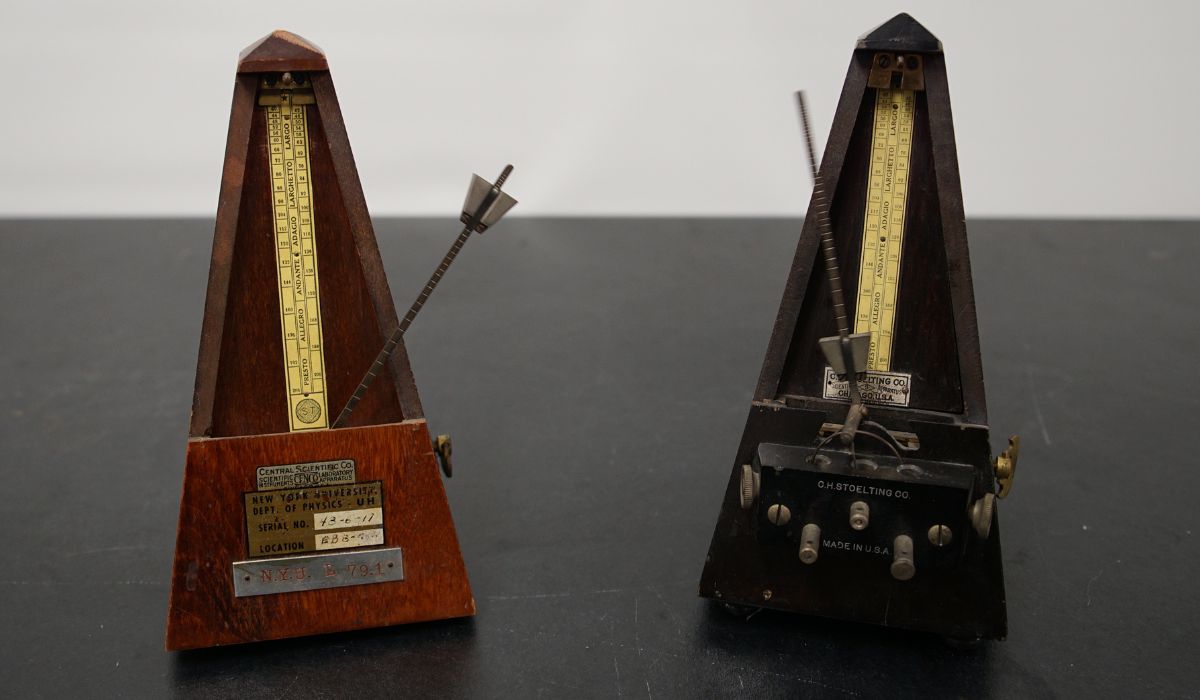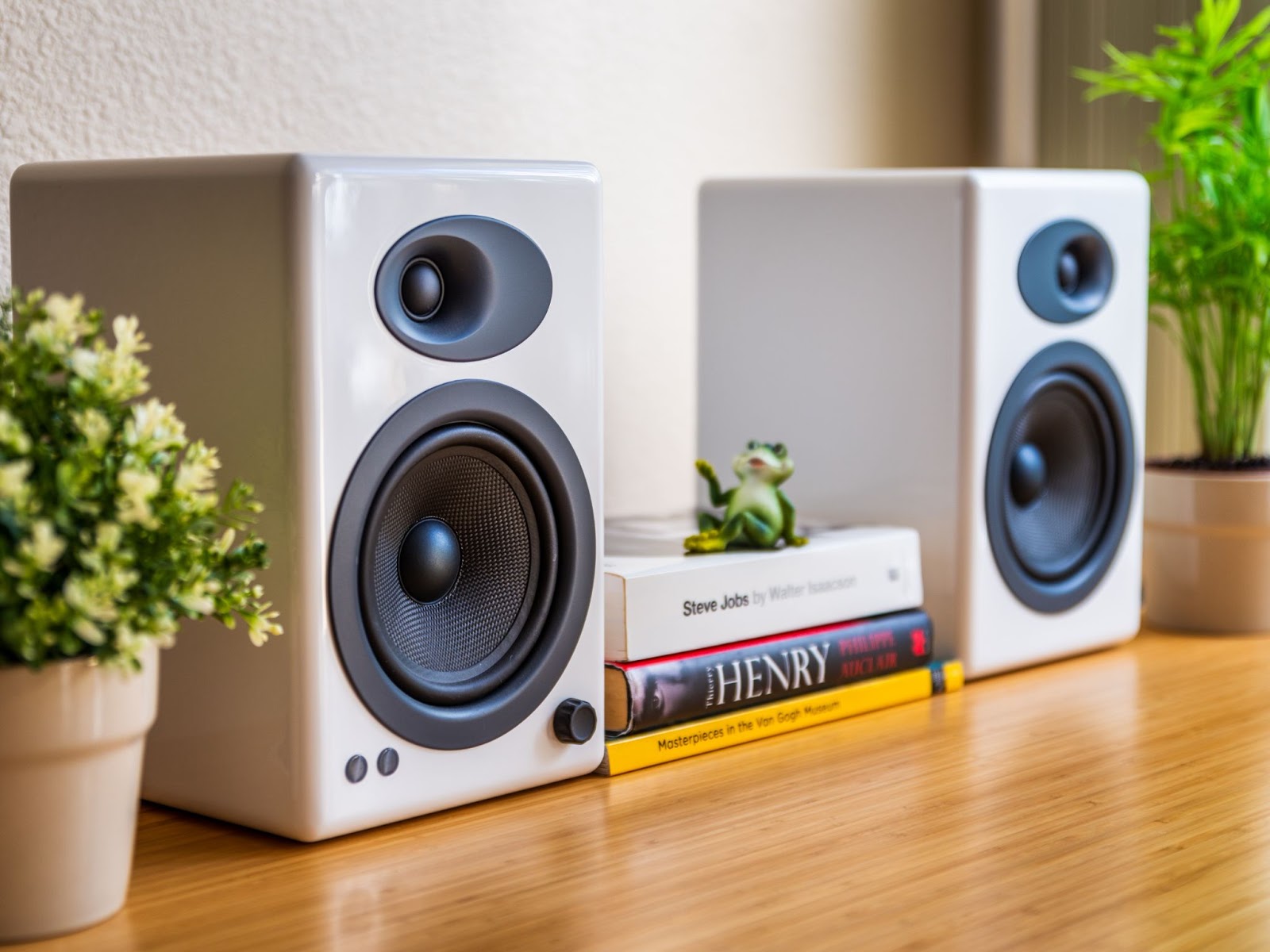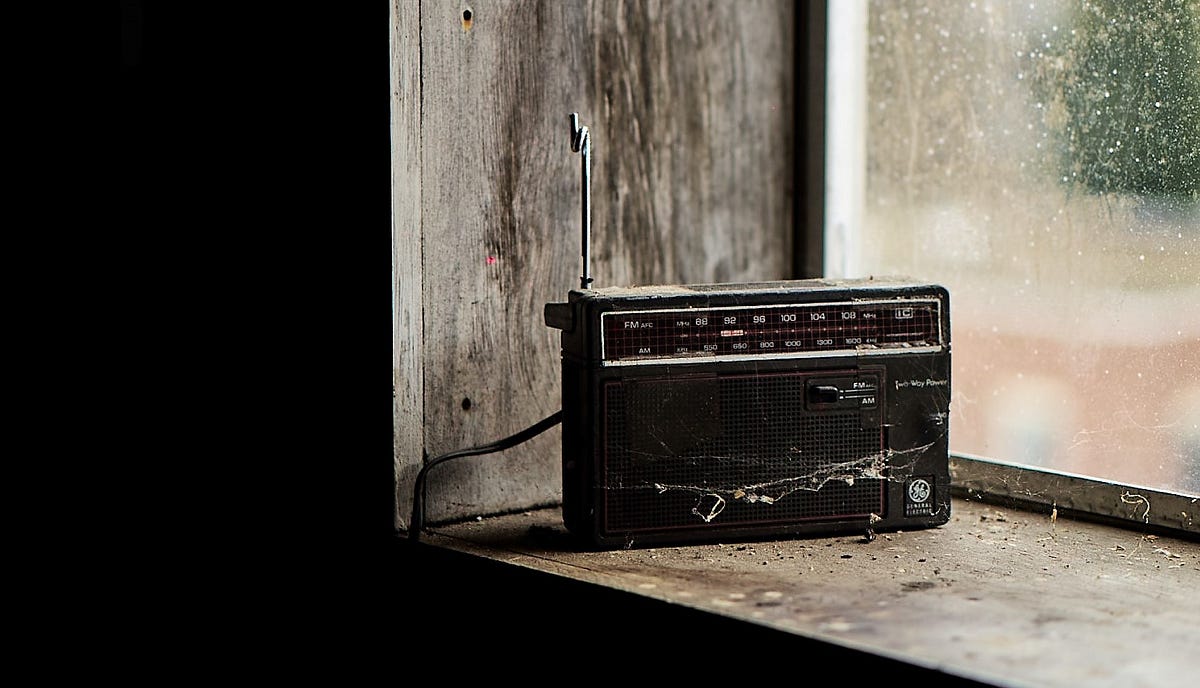Home>Production & Technology>Metronome>What Does The Word Metronome Mean


Metronome
What Does The Word Metronome Mean
Modified: January 22, 2024
Discover the meaning of the word "metronome" and its importance in music. Explore how a metronome helps musicians maintain proper timing and rhythm.
(Many of the links in this article redirect to a specific reviewed product. Your purchase of these products through affiliate links helps to generate commission for AudioLover.com, at no extra cost. Learn more)
Table of Contents
Introduction
Music, with its rhythm and tempo, has the incredible power to touch our souls and evoke emotions. From the haunting melodies of classical compositions to the energetic beats of rock and pop, music enables us to express ourselves and connect with others. But have you ever wondered how musicians are able to stay perfectly in sync and maintain a consistent tempo?
Enter the metronome, a simple yet indispensable tool for musicians of all levels. For those unfamiliar with the term, a metronome is a device that produces regular, precise ticks or beats, allowing musicians to keep time while rehearsing or performing. Whether you’re an aspiring pianist, a seasoned guitarist, or a budding drummer, the metronome is your trusted companion in the pursuit of musical proficiency.
In this article, we’ll dive into the world of metronomes, exploring their history, functions, and importance in music education. We’ll debunk common misconceptions, discuss different types of metronomes, and even touch upon the relationship between famous composers and this invaluable musical tool. So, let’s get started and discover the rhythmic wonders of the metronome!
Definition of a Metronome
Before we delve deeper into the world of metronomes, let’s begin by understanding what exactly this musical device is. In simple terms, a metronome is a device used by musicians to keep time and maintain a steady rhythm while practicing or performing.
A traditional metronome consists of a mechanical or electronic mechanism that produces regular, consistent beats or ticks at a specific tempo. These beats are often represented by a swinging pendulum, a flashing light, or an audible click. The tempo or speed of the beats can be adjusted according to the desired musical tempo.
The concept of the metronome dates back to the early 19th century when it was invented by Johann Nepomuk Maelzel, a German inventor and musician. Maelzel’s metronome design was a significant innovation at the time, as it provided musicians with a reliable and precise tool to measure and maintain a consistent tempo.
Today, metronomes have evolved beyond their mechanical origins, with many digital and smartphone applications available that offer a wide range of features and functionalities. These modern metronomes often include additional features such as tempo presets, visual displays, and even programmable rhythm patterns.
Now that we have a clear understanding of what a metronome is, let’s explore its fascinating history and how it has evolved over time.
Historical Background
The invention of the metronome can be attributed to Johann Nepomuk Maelzel, a German inventor and musician, who developed the device in the early 19th century. Maelzel’s metronome was a significant advancement in the world of music, as it provided musicians with a precise tool to measure and maintain a consistent tempo.
Prior to the metronome, musicians relied on conducting gestures or the natural flow of the music to establish a tempo. However, this often led to variations in tempo and made it challenging for performers to stay synchronized. Maelzel’s metronome offered a practical solution to this problem.
The design of Maelzel’s metronome consisted of a pendulum that swung back and forth, producing a ticking sound or audible click with each swing. The tempo or speed of these ticks could be adjusted by moving a weight along the pendulum rod. This allowed musicians to set the metronome to the desired tempo and maintain a consistent beat throughout their practice sessions or performances.
Maelzel’s invention gained popularity among musicians and composers of the time, including Ludwig van Beethoven. Beethoven, who was known for his meticulous attention to rhythm and tempo, embraced the metronome as a tool to ensure the correct interpretation of his compositions.
Despite its initial success, the metronome also sparked debates within the music community. Critics argued that it stifled musical expression and that strict adherence to a mechanical beat could result in a robotic and lifeless performance. These concerns raised questions about the balance between a metronomically precise tempo and the interpretative freedom required in music.
Over time, the metronome design underwent several improvements and modifications, with different inventors introducing electronic and digital versions of the device. Today, musicians have a wide range of metronome options available, from traditional mechanical metronomes to advanced smartphone applications.
With its rich historical significance and fundamental role in music, the metronome continues to be a valuable tool for musicians of all genres and skill levels. Its influence on musical composition and interpretation cannot be overstated.
Now that we have explored the historical background of the metronome, let’s examine its primary function and how it is used in the world of music.
Function of a Metronome
The primary function of a metronome is to help musicians maintain a steady tempo or beat while practicing or performing music. It provides a consistent and reliable reference for rhythm, allowing musicians to stay in sync with themselves and others.
When using a metronome, musicians can set the desired tempo by adjusting the beats per minute (BPM). The metronome then produces a regular, audible click, or visual cue, at the specified tempo, creating a rhythmic framework within which the musician can play or sing.
One of the key advantages of using a metronome is that it provides objective feedback on timing and rhythm. It helps musicians develop a strong sense of rhythm, precision, and accuracy in their playing. By practicing with a metronome regularly, musicians can improve their timing, eliminate hesitations, and develop a natural and consistent sense of tempo.
Metronomes are widely used across various genres of music, from classical to jazz, rock to hip-hop. They assist musicians in mastering complex rhythmic patterns, maintaining a steady beat during ensemble performances, and improving their overall musicality.
In addition to keeping time, metronomes can also be used as tools for practicing different subdivisions and time signatures. Musicians can set the metronome to emphasize specific beats or subdivisions within a measure, helping them develop a better understanding of rhythmic patterns and syncopations.
Moreover, metronomes serve as valuable aids for musicians learning to play complex passages or technical exercises. By gradually increasing the tempo on the metronome, musicians can challenge themselves to play with increasing speed and accuracy, ultimately improving their technical proficiency.
Aside from individual practice, metronomes are also used during rehearsals and ensemble performances. They ensure that all members of the group stay synchronized and maintain a consistent tempo throughout the music. This is especially crucial in large ensembles where many musicians are playing different parts simultaneously.
Overall, the function of a metronome is to provide a steady beat and a sense of timing for musicians. It serves as a trusted companion for both beginners and professionals, helping them refine their rhythmic skills, develop a solid sense of tempo, and deliver captivating musical performances.
Now that we understand the function of a metronome, let’s explore the different types of metronomes available in the market.
Types of Metronomes
Over the years, metronomes have evolved from mechanical devices to incorporate digital and smartphone applications. Let’s explore some of the different types of metronomes available today:
- Mechanical Metronomes: This type of metronome, also known as a traditional or pendulum metronome, uses a mechanical mechanism to produce beats. It typically consists of a swinging pendulum with an adjustable weight that sets the tempo.
- Electronic Metronomes: Electronic metronomes utilize electronic circuitry to generate beats at specific tempos. They often feature digital displays, buttons for tempo adjustments, and additional functions such as rhythm patterns and accent settings.
- Software Metronomes: With the rise of technology, software metronomes have become popular. These are computer programs or mobile applications that offer metronome functionalities. They can be installed on computers, smartphones, or tablets, providing musicians with a portable and versatile option.
- Clip-On Metronomes: Clip-on metronomes are compact devices that can be attached to an instrument or worn on clothing. They provide a convenient hands-free option for musicians who need to keep time while playing their instrument.
- Smartphone Metronome Apps: There are numerous metronome applications available for smartphones, providing musicians with a wide range of features and customization options. These apps often include visual displays, customizable beats, and the ability to save and share tempo settings.
Each type of metronome has its own advantages and drawbacks, and the choice ultimately depends on the preferences and needs of the musician. Some musicians prefer the traditional feel and visual appeal of a mechanical metronome, while others opt for the convenience and versatility of digital applications.
Regardless of the type chosen, all metronomes serve the same fundamental purpose of providing a rhythmic reference for musicians. The wide variety of options available ensures that musicians can find a metronome that suits their requirements and enhances their practice sessions and performances.
Now that we have explored the different types of metronomes, let’s move on to understanding how to effectively use a metronome in the practice room.
How to Use a Metronome
Using a metronome effectively can greatly enhance your rhythm and timing skills. Here are some tips on how to make the most out of your metronome practice:
- Select the appropriate tempo: Start by choosing a tempo that is comfortable for you. If you’re new to using a metronome, begin with a slower tempo and gradually increase it as you gain confidence and precision.
- Set the metronome: Adjust the metronome to the desired tempo. This can be done by using the buttons or dials on electronic metronomes or by moving the weight on mechanical metronomes.
- Focus on the downbeat: Pay attention to the first beat of each measure. This will help you maintain the overall structure and phrasing of the music.
- Practice with subdivisions: Once you are comfortable with the basic beat, challenge yourself by practicing different subdivisions. Set the metronome to emphasize specific beats or subdivisions within a measure. For example, you can focus on eighth notes, triplets, or sixteenth notes.
- Practice with dynamic variations: Experiment with playing with varying dynamics while staying in sync with the metronome. This will help you develop a sense of control and expressiveness in your playing.
- Incorporate different time signatures: Explore different time signatures with the metronome. Practice in common time (4/4), as well as in other time signatures like 3/4, 6/8, or even more complex meters. This will enhance your ability to navigate diverse musical styles and rhythms.
- Gradually increase the tempo: Once you feel comfortable at a particular tempo, challenge yourself by gradually increasing the speed on the metronome. Pushing your boundaries will help you build speed and agility.
- Use it during ensemble practice: When practicing with others, use a shared metronome to ensure that everyone stays synchronized. This will help develop a tight and cohesive sound as a group.
- Experiment with different metronome sounds: Many digital metronomes offer a variety of sounds and accents. Changing the sound can add variety to your practice sessions and keep you engaged.
- Stay consistent: Regular practice with a metronome is key. Dedicate a specific portion of your practice time to metronome work and make it a habit. Consistency will yield noticeable improvements in your timing and rhythm.
Remember, using a metronome is a tool to support your musical development. It is essential to balance the metronome’s precision with expressive interpretation. Use it as a guide, but also allow yourself room for musical expression and freedom.
Now that we have explored how to effectively use a metronome, let’s discuss the importance of metronomes in music education.
Importance of Metronome in Music Education
The metronome plays a crucial role in music education, providing numerous benefits for students of all levels. Here are some reasons why the metronome is considered an invaluable tool in music education:
- Developing a Strong Sense of Timing: The metronome serves as a reliable reference for students to develop a steady sense of timing. Regular practice with a metronome helps students internalize the pulse and rhythm, improving their accuracy and precision.
- Building Technical Proficiency: Practicing with a metronome allows students to work on technical exercises and challenging passages at a controlled tempo. Gradually increasing the speed on the metronome helps build speed and dexterity in their playing.
- Enhancing Ensemble Skills: In ensemble settings, the metronome ensures that all musicians stay synchronized and play in unity. It helps develop a collective sense of pulse and keeps performances cohesive.
- Improving Sight-Reading Abilities: By practicing sight-reading exercises with a metronome, students can maintain a consistent tempo and stay focused on the music, leading to improved sight-reading proficiency.
- Understanding Complex Rhythmic Patterns: The metronome aids in breaking down complex rhythms into manageable subdivisions. By setting the metronome to emphasize specific beats or subdivisions, students can better comprehend and execute intricate rhythmic patterns.
- Promoting Discipline and Time Management: Practicing with a metronome instills discipline in students by requiring them to stay accountable to a steady beat. It helps them manage their time effectively and establish consistent practicing habits.
- Training for Live Performances: Performing with a metronome in rehearsal prepares students for live performances where a steady tempo is crucial. It develops their ability to maintain composure and stay in sync with an external rhythmic source.
- Developing Musical Expression: While the metronome provides a steady beat, it is essential to explore subtle variations in dynamics and phrasing. This helps students maintain musical expression while staying in sync with the metronome.
Incorporating the metronome into music education ensures that students develop essential skills for their musical journey. It helps them build a strong foundation in rhythm, timing, and ensemble playing, ultimately enhancing their overall musicianship.
Now that we understand the significance of metronomes in music education, let’s address some common misconceptions associated with these valuable tools.
Common Misconceptions about Metronomes
While the metronome is a widely used and highly beneficial tool for musicians, there are several misconceptions surrounding its usage. Let’s address some of the common misunderstandings about metronomes:
- Metronomes stifle musical expression: One common misconception is that using a metronome restricts creativity and musical interpretation. However, a metronome is meant to provide a steady beat and guide the rhythm, while musical expression should come from the musician. The metronome serves as a foundation upon which artists can build their own unique musical expression.
- Using a metronome makes music mechanical: Some believe that relying on a metronome leads to robotic and mechanical performances. While it’s true that overreliance on the metronome without adding expressive nuances can result in a sterile performance, musicians should aim to find a balance between precise rhythm and expressive interpretation.
- Metronomes are only for beginners: Another misconception is that metronomes are only useful for beginners who are still developing their sense of rhythm. In reality, metronomes are valuable tools for musicians at all levels, including professionals. They help refine timing, strengthen technical abilities, and maintain consistency in performances.
- Metronomes are only for classical music: Some may believe that metronomes are primarily used in classical music. However, metronomes are equally beneficial for musicians across all genres. Whether you’re practicing jazz, rock, or pop, a metronome can assist in developing a solid sense of timing and rhythm.
- Metronomes are only for instrumentalists: It is a misconception that metronomes are exclusive to instrumentalists. Vocalists can greatly benefit from using a metronome to develop a strong sense of timing, improve rhythmic accuracy, and enhance overall performance skills.
- Metronomes are unnecessary if you have a good sense of rhythm: While it’s true that some musicians naturally possess a strong sense of rhythm, using a metronome can still provide valuable benefits. It can refine timing skills, expose subtle rhythmic weaknesses, and help maintain consistency, even for those with an innate rhythmic sense.
- Metronomes should always be followed strictly: While it is important to adhere to the metronome’s tempo, there are instances where slight tempo fluctuations are necessary for musical expression. Musicians should use the metronome as a guide and allow for subtle variations when appropriate to enhance musical phrasing and emotive performance.
By dispelling these misconceptions, we can appreciate the metronome for the valuable tool it truly is – a companion in developing rhythm, timing, and overall musicality.
Now let’s explore the fascinating relationship between famous composers and the metronome.
Famous Composers and the Metronome
The advent of the metronome had a profound influence on the world of classical music, particularly in the 19th century. Many renowned composers embraced the metronome as a tool to ensure the correct interpretation of their compositions. Let’s explore the relationship between famous composers and the metronome:
Ludwig van Beethoven: Beethoven was among the first composers to fully embrace the metronome. He believed in the importance of precise rhythmic indications and was meticulous in specifying tempos in his scores. Beethoven used Maelzel’s metronome extensively, incorporating metronome markings into his symphonies, sonatas, and other works.
Frédéric Chopin: Chopin was also known for his careful attention to rhythm and tempo. His music often features expressive rubato, where the tempo fluctuates subtly. However, Chopin was in favor of using the metronome as a starting point for practice, indicating that musicians should deviate from the strict tempo when appropriate for expressive purposes.
Richard Wagner: Wagner, the iconic composer of operas such as “Tristan und Isolde” and “The Ring Cycle,” appreciated the metronome’s precision. He believed that the metronome markings could effectively communicate the intended tempo of his compositions, ensuring consistency and unity in performances.
Johannes Brahms: Brahms, known for his intricate compositions, was both influenced by and skeptical of the metronome. While he initially embraced the device and specified metronome markings in his scores, he also acknowledged the importance of musical expression and encouraged performers to interpret his music with flexibility.
Claude Debussy: Debussy’s music is characterized by its impressionistic and atmospheric qualities. He approached the use of the metronome with caution, believing that it should serve as a general guideline rather than a rigid constraint. Debussy valued the freedom to shape the music’s flow and expression while maintaining a loose adherence to a steady beat.
While these composers had differing perspectives and approaches to the metronome, their engagement with the device illustrates its significance in their creative processes. The metronome not only provided them with a consistent pulse but also served as a means of communication, offering performers specific indications for tempo and rhythm.
Today, musicians continue to study the metronome markings left by these composers to gain insights into their intended tempos and interpretive choices. The metronome serves as a bridge between the intentions of the composers and the performances of the musicians.
Now that we have explored the relationship between famous composers and the metronome, let’s conclude our journey through the rhythmic wonders of this invaluable musical tool.
Conclusion
The metronome, a seemingly simple device, holds significant importance in the world of music. From its invention by Johann Nepomuk Maelzel in the early 19th century to its digital adaptations today, the metronome has become an indispensable tool for musicians across all genres.
We have explored the definition and functions of a metronome, delving into its historical background and the different types available. We have learned how to effectively use a metronome in practice sessions, emphasizing the importance of timing, technical proficiency, and ensemble skills.
In music education, metronomes are instrumental in developing a strong sense of rhythm, improving sight-reading abilities, and promoting discipline in practice. We have debunked common misconceptions surrounding the use of metronomes, highlighting their role in facilitating musical expression rather than hindering it.
Famous composers such as Beethoven, Chopin, Wagner, Brahms, and Debussy embraced the metronome, recognizing its ability to communicate tempo and rhythm. Their relationship with the metronome sheds light on its influence in shaping their compositions and performances.
As you embark on your musical journey, consider the metronome as a musical ally, a guide that keeps you grounded in rhythm while allowing for expressive interpretation. Embrace the rhythmic wonders of the metronome and harness its power to refine your playing, strengthen your sense of timing, and elevate your musicality.
So, whether you are a beginner honing your rhythm, a seasoned performer seeking precision, or a composer bringing your music to life, the metronome remains an invaluable companion on your musical voyage. Embrace its ticking beats, let it guide your tempo, and watch your musicality soar to new heights!











